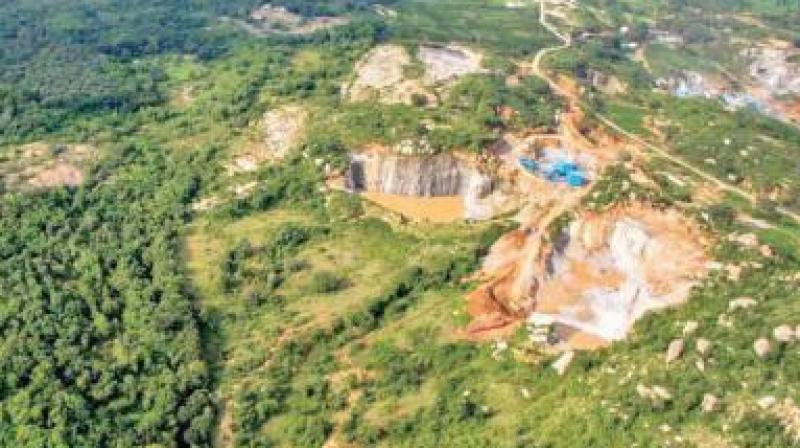Violations continue even after licences cancelled
Rejoice over the suspension of licences did not last long as there was a new decision to trim the ESZ by over 100 sqkm.

The Bannerghatta National Park (BNP), the last remaining lung space, is constantly under threat from elements trying to exploit it for their own ends unmindful of legalities. As a terminal point on the northern side of the Mysore Elephant Reserve, it is the path of movement for Asian elephants that migrate from the adjacent Cauvery Wildlife Sanctuary of Karnataka to Krishnagiri and Hosur Forest Division of Tamil Nadu.
Considering its proximity to Bengaluru, its importance as a green belt cannot be underemphasised since it moderates the city’s climate, makes it liveable and therefore a sought-after investment hub as well.
Even after the suspension of licences granted to stone crushers and quarrying operators in 2018, it was recently observed that quarrying is continuing in the Eco-Sensitive Zone (ESZ) of the park.
The government wanted to please the mining lobby and signed the transfer order of Range Forest Officer Ganesh V. But had to beat a hasty retreat and reinstate the officer after pressure from citizens. The Union ministry has directed the state authorities to take stern action against those responsible for violations in the ESZ. We are waiting for response from the state government.
Rejoice over the suspension of licences did not last long as there was a new decision to trim the ESZ by over 100 sqkm. While it should have been surmised that the existing ESZ of 268.96 sqkm should continue until a decision is taken by MOEFF, what has happened is that all the agencies involved, from the forest department onwards, are treating the 100 km area proposed to be trimmed as not in need of their protection and not under their purview. This has resulted in illegal quarrying, felling of trees and excavation work, where criminal intent cannot be ruled out.The ruthless exploitation of the national park has been protested by villagers who took out a petition with over 50,000 signatures and the issue of safe zone has been studied in detail by the Indian Institute of Science (IISc).
(The author is co-ordinator, Bannerghatta Nature Conservation Trust)

